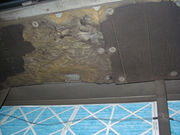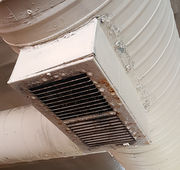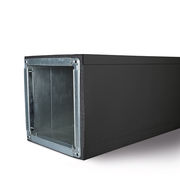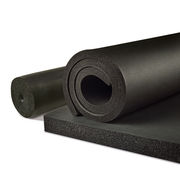 There are more than 100,000 known species of mold. Mold spores are everywhere, indoors and outdoors, on our clothes, in our building materials, and in the air we breathe. We can’t avoid them, but we can minimize their potential for growth in our buildings. And we should. Mold is a common allergen; it exacerbates asthma, and can cause respiratory problems. It can also have far reaching legal consequences for owners and others in the construction industry.
There are more than 100,000 known species of mold. Mold spores are everywhere, indoors and outdoors, on our clothes, in our building materials, and in the air we breathe. We can’t avoid them, but we can minimize their potential for growth in our buildings. And we should. Mold is a common allergen; it exacerbates asthma, and can cause respiratory problems. It can also have far reaching legal consequences for owners and others in the construction industry.
 Mold requires 3 things to grow: (1) food, (2) temperatures between 40 to 100ºF and (3) moisture. Virtually any organic material will do for food, including dust, cellulose and even some building materials. Therefore, the best bet for controlling mold is to carefully control the moisture in our buildings. This requires vigilant control of moisture entry into the building and prevention of condensation throughout our ductwork and cold water piping.
Mold requires 3 things to grow: (1) food, (2) temperatures between 40 to 100ºF and (3) moisture. Virtually any organic material will do for food, including dust, cellulose and even some building materials. Therefore, the best bet for controlling mold is to carefully control the moisture in our buildings. This requires vigilant control of moisture entry into the building and prevention of condensation throughout our ductwork and cold water piping.
Mold doesn’t require standing water to grow. High humidity is moisture enough for mold spores to germinate. Ideally, buildings should maintain relative humidity of 60% or lower – not only for comfort, but to prevent mold growth. Unfortunately, areas of high humidity are bound to occur in some areas of an HVAC system.
 Condensation is another problem, occurring whenever air comes in contact with surfaces that are cooler than the dew point of the surrounding air. This makes cold water piping and cold ductwork prime areas for unwanted moisture. This moisture can condense into liquid at the wrong place and the wrong time, wetting building components such as ceiling tiles, drywall and carpeting, and setting the stage for mold growth.
Condensation is another problem, occurring whenever air comes in contact with surfaces that are cooler than the dew point of the surrounding air. This makes cold water piping and cold ductwork prime areas for unwanted moisture. This moisture can condense into liquid at the wrong place and the wrong time, wetting building components such as ceiling tiles, drywall and carpeting, and setting the stage for mold growth.
Insulation: The Key to Preventing Unwanted Moisture
Insulation is the best way to avoid condensation in ductwork and piping systems. However, if improperly installed or damaged, some types of insulation can provide a cozy breeding ground for mold.
Closed-cell, elastomeric foam is the first and only type of insulation to provide thermal efficiency along with the necessary prevention of condensation and water vapor transmission on cold water and air handling systems. There have been numerous studies that support the case for closed-cell, elastomeric foam over fiberglass products when it comes to mold prevention. Here’s why.
- Fiberglass structure provides a wicking opportunity for moisture; therefore moisture can quickly travel, expanding the area for potential mold growth.
- Fiberglass tends to trap and collect dust. In fact, the air pockets that make fibrous type materials an effective insulator also makes them prone to trap and retain the kind of dust that’s perfect food for mold
- Where you have moisture, the right temperature and food, mold is likely to grow.
Many experts recommend replacing fibrous glass liners with materials that are less likely to encourage fungal growth (i.e. closed-cell foam insulation) in areas where humidity is likely to exceed 70%.
 An increasing number of schools, universities and other facilities seeking better IAQ are replacing existing insulation with elastomeric foam, not only for its mold-resistant properties, but its fiber-free, dust-free, and non-particulating construction.
An increasing number of schools, universities and other facilities seeking better IAQ are replacing existing insulation with elastomeric foam, not only for its mold-resistant properties, but its fiber-free, dust-free, and non-particulating construction.
Properly installed and maintained, elastomeric foam insulation like ArmaFlex® is an extremely effective deterrent to biological contamination. It’s closed-cell structure prevents moisture from wicking into the insulation. And even if closed-cell foam duct liner gets dirty or wet, its smooth surface makes it extremely easy to clean.
The same cannot be said of fiber-based duct liners, which are notoriously difficult to clean, and deteriorate more quickly under adverse conditions. While many fiberglass duct liners are now encapsulated with a protective jacket that acts as a vapor retarder, this outer covering is easily punctured. And closed-cell elastomeric foam requires no such vapor retarder or protection indoors.
Download the full whitepaper here.

